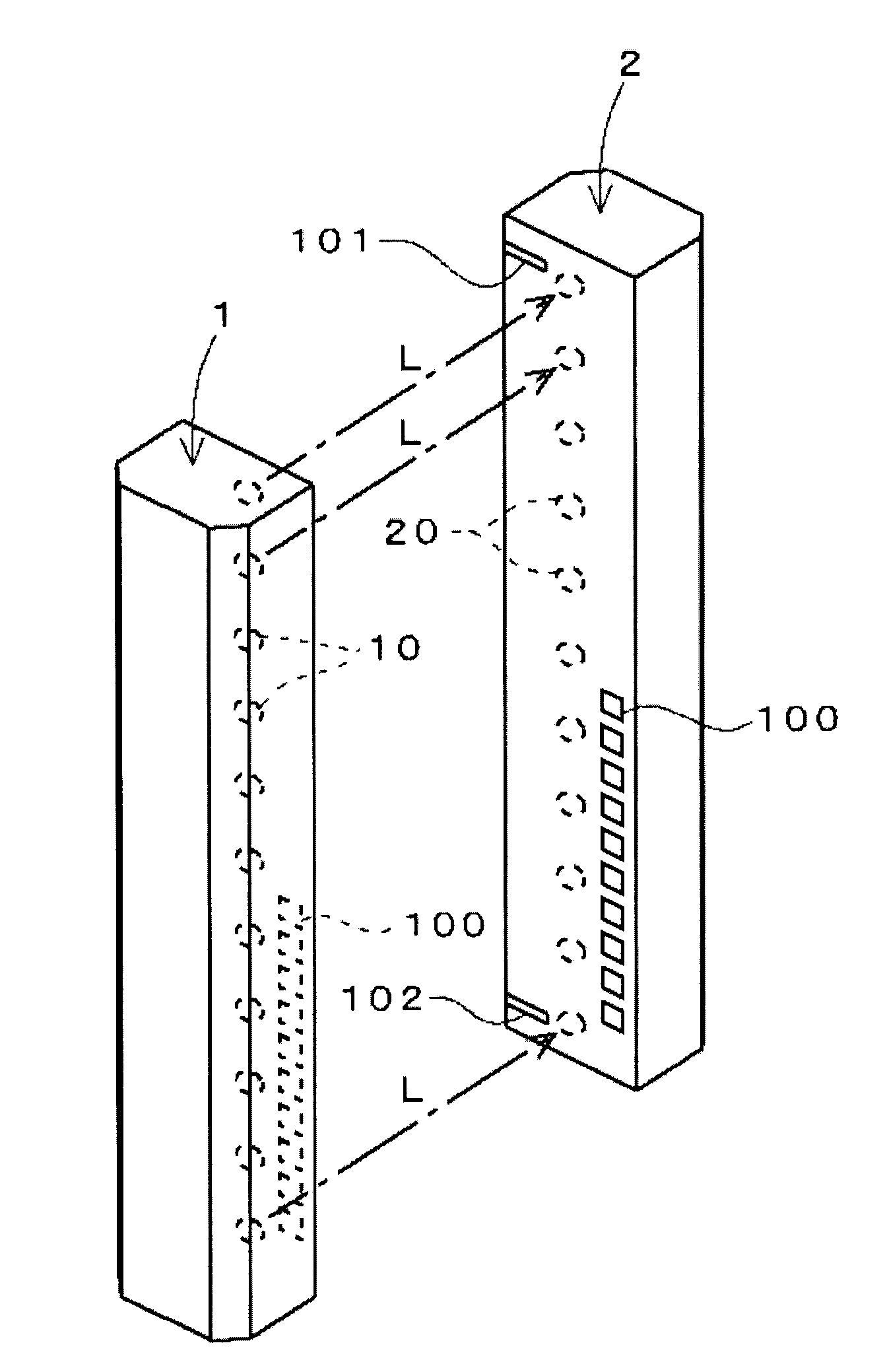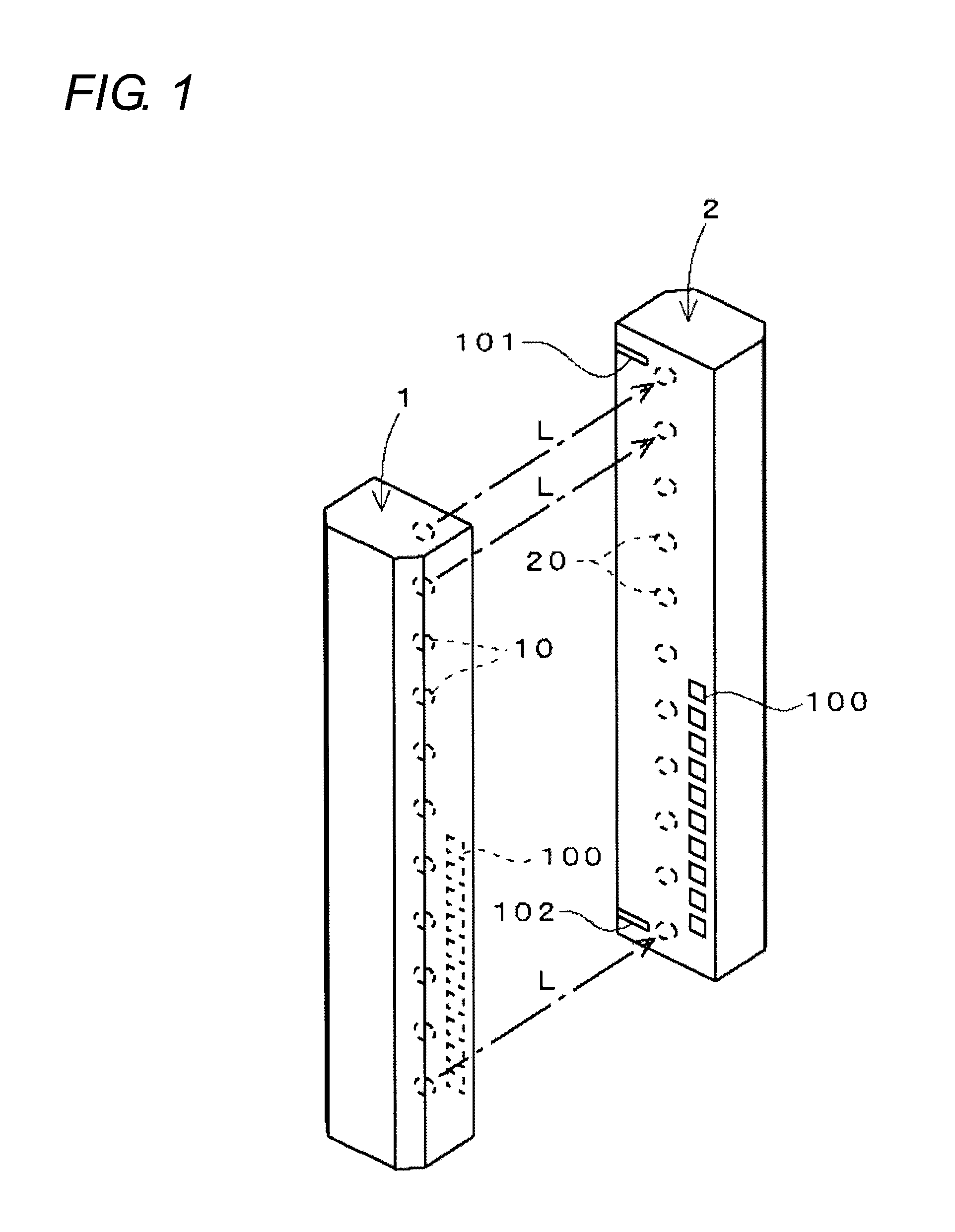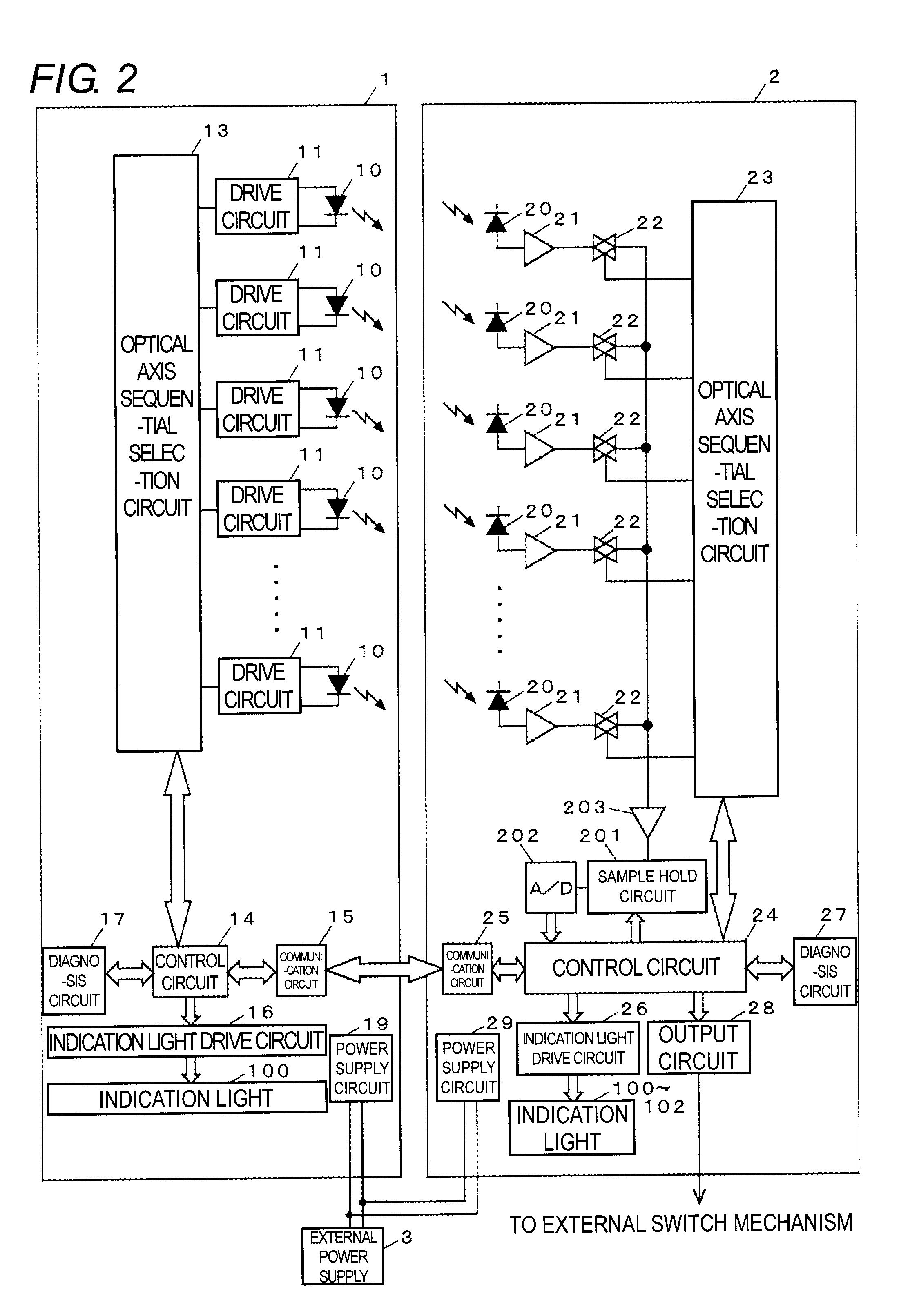Multi-optical axis photoelectronic sensor
a photoelectronic sensor and optical axis technology, applied in the direction of optical radiation measurement, counting objects on conveyors, instruments, etc., can solve the problems of insufficient inability to complete the adjustment at sufficient accuracy, and gradual decrease of light receiving quantity, etc., to achieve high accuracy of optical axis adjustment, stable determination, and easy to judge the effect of adjustmen
- Summary
- Abstract
- Description
- Claims
- Application Information
AI Technical Summary
Benefits of technology
Problems solved by technology
Method used
Image
Examples
Embodiment Construction
[0042]FIG. 1 shows an outer appearance of a multi-optical axis photoelectronic sensor applied with the present invention. The multi-optical axis photoelectronic sensor is configured by a light projector 1 and a light receiver 2, which have long shapes. A plurality of light emitting elements 10 (LED) is arranged in a line along a longitudinal direction in the light projector 1, and a light receiving element 20 (photodiode) of the same number as the light emitting element 10 is arranged in a line along a longitudinal direction at the same pitch as the light emitting element 10 in the light receiver 2.
[0043]A transparent window (not shown) is respectively formed in a range corresponding to the arrangement of the light emitting elements 10 and the light receiving elements 20 at the front surfaces of the light projector 1 and the light receiver 2. A plurality of (ten in the illustrated example) square indication lights 100 is arranged in a line along the longitudinal direction at the sid...
PUM
 Login to View More
Login to View More Abstract
Description
Claims
Application Information
 Login to View More
Login to View More - R&D
- Intellectual Property
- Life Sciences
- Materials
- Tech Scout
- Unparalleled Data Quality
- Higher Quality Content
- 60% Fewer Hallucinations
Browse by: Latest US Patents, China's latest patents, Technical Efficacy Thesaurus, Application Domain, Technology Topic, Popular Technical Reports.
© 2025 PatSnap. All rights reserved.Legal|Privacy policy|Modern Slavery Act Transparency Statement|Sitemap|About US| Contact US: help@patsnap.com



